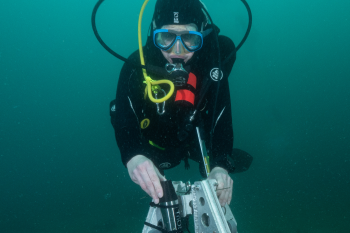© Pint of Science, 2025. All rights reserved.
“Alzheimer’s disease drug development failure rates are as high as 99.6%”
Qingqing Fan, PhD Student
Atoms to Galaxies

July 2013, Shanghai - “Despite the dryness of the bright sun, the air was cool the moment I stepped into Shanghai ZhongShan hospital. Patients, families - adults, children, adolescents - sat, waiting for their turn, so orderly as if in a play, their actions scripted. Three weeks since I started my internship, I gained a new perspective of what happens from the other side of the hospital: stress in the operation room, the precision of every incision, and the close-knit teamwork that saved countless lives. Being so close to life, how can one not be interested in the mystery of our bodies?”
Alzheimer’s disease (AD) is a well-known disorder that causes the brain to shrink, leading to dementia, a decline in ability to think, remember, and function independently. Since there are currently no known cures or ways to treat AD and drug development has not been met with much success, it is necessary to develop early detection techniques to hinder the onset of symptoms.
These techniques rely on the detection of neurodegenerative biomarkers, molecules produced by the body that are indicative of disease. Qingqing’s research aims to develop a colorimetric sensor for rapid and simple detection of Aβ (1-42) biomarkers, one of the biomarkers characteristic of AD. She will synthesise a metal-organic framework (MOF) based sensor on which biomarkers will adsorb onto. The chemical reaction between the biomarkers and a catalyst will generate qualitative coloured readout. Since the amount of biomarkers present in AD patients varies by the individual. The challenge is to set up a parameter on the concentration range for the detection.




